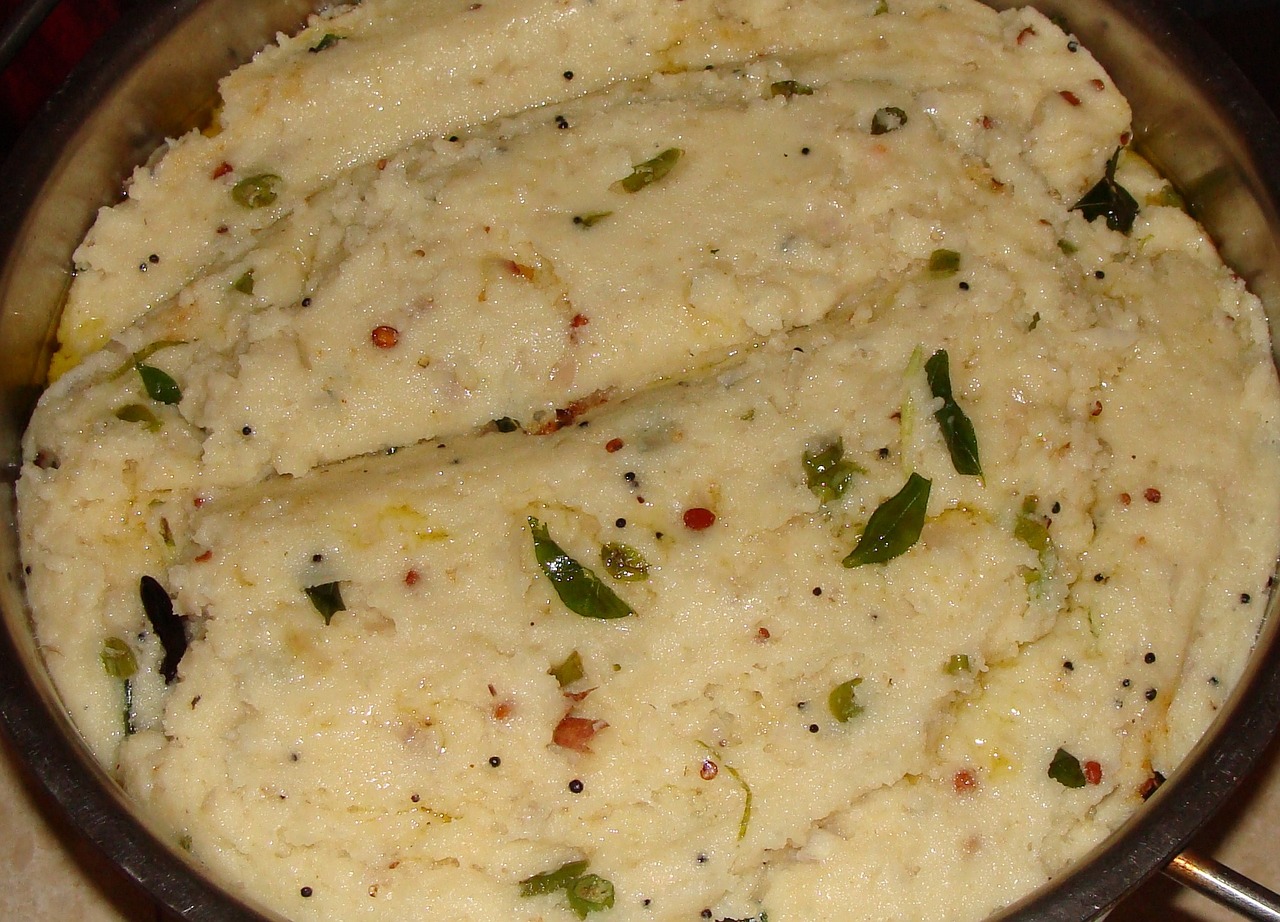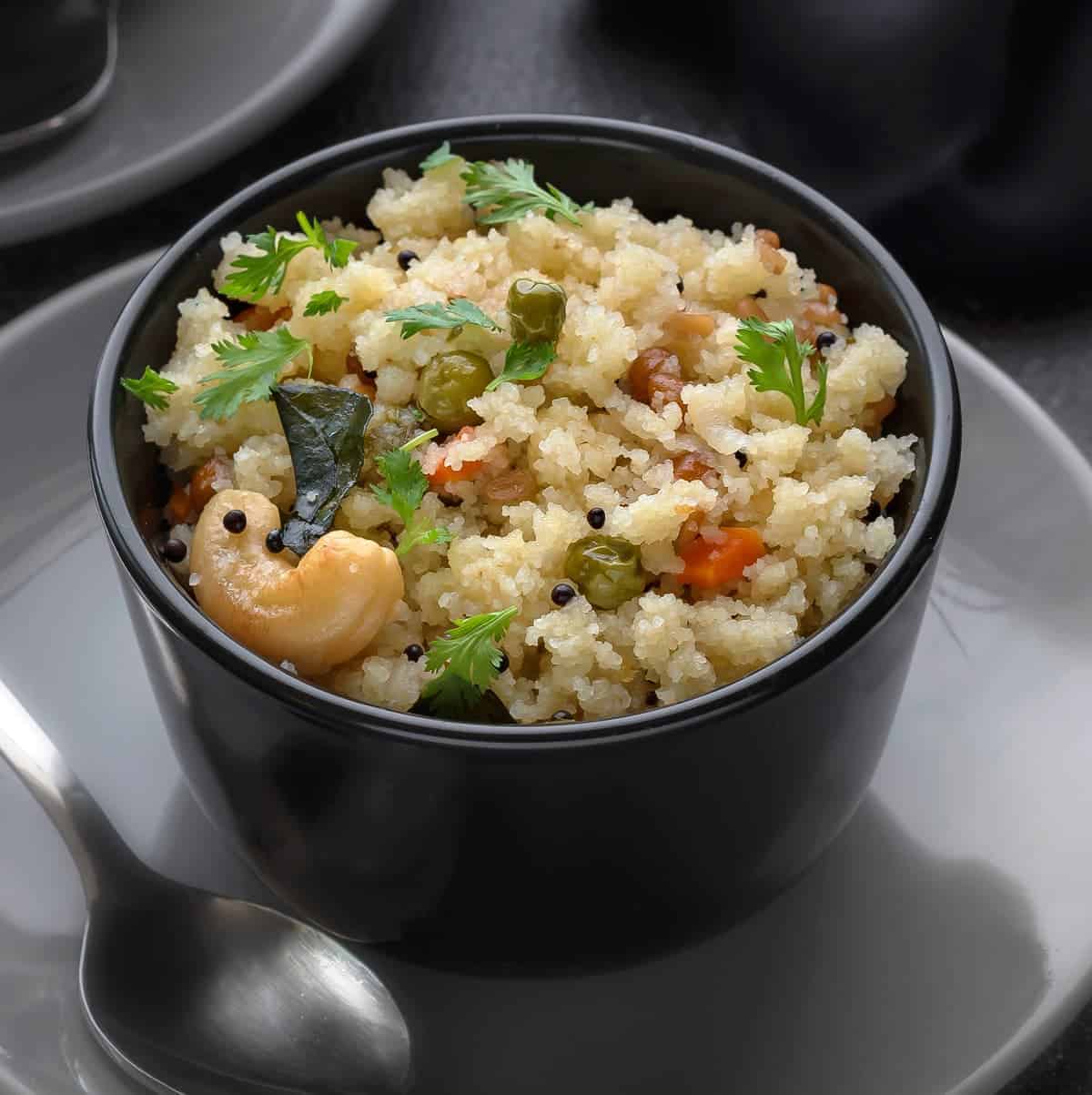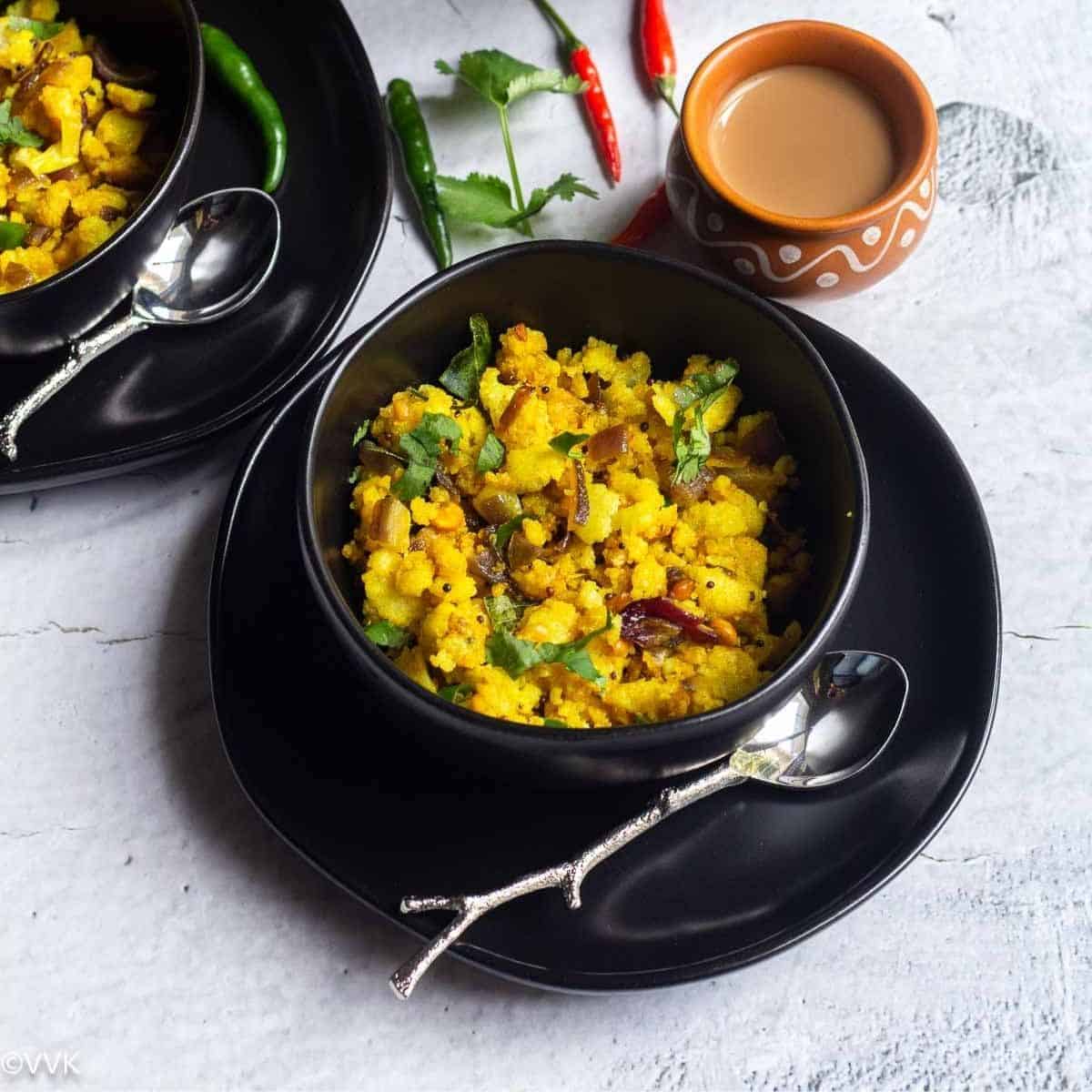Upma Recipe: A Flavorful Breakfast Delight for a Healthy Start to Your Day

Are you tired of having the same old breakfast every day? Looking for a delicious and nutritious option to kickstart your mornings? Look no further than Upma! This popular South Indian dish is not only easy to make but also incredibly versatile. In this article, we will guide you through the process of preparing a mouthwatering Upma and provide you with some tips, variations, and health benefits. So, let’s dive in!
“Unveiling the Secret to the Perfect Upma Recipe: You Won’t Believe How Delicious It Can Be!”
Upma, also known as Uppittu, is a traditional Indian breakfast dish made from semolina (also known as rava or sooji). It is a simple yet flavorful dish that is loved by people of all ages. Upma is known for its unique texture and the blend of spices that give it a distinct taste. It is commonly served with coconut chutney, pickle, or a side of yogurt.

What is Upma?
Upma is a savory dish made by roasting semolina and then cooking it with a tempering of spices, vegetables, and aromatic ingredients. The roasted semolina gives Upma a slightly nutty flavor and a light, fluffy texture. The tempering process involves frying mustard seeds, curry leaves, chopped onions, ginger, and green chilies in oil or ghee. This aromatic mixture is then combined with cooked semolina, resulting in a flavorful and satisfying dish.
Ingredients Required
To prepare Upma, you will need the following ingredients:
- 1 cup semolina (rava/sooji)
- 2 tablespoons oil or ghee
- 1 teaspoon mustard seeds
- A few curry leaves
- 1 onion, finely chopped
- 1 green chili, finely chopped
- 1-inch piece of ginger, grated
- 1 carrot, finely chopped
- 1/4 cup green peas
- 1/4 cup chopped beans
- Salt to taste
- 2 cups water
- Fresh coriander leaves for garnishing
Step-by-Step Preparation Guide
Roasting the Semolina
- Heat a pan on medium heat and add the semolina to it.
- Roast the semolina for about 5 minutes or until it turns golden brown and releases a nutty aroma.
- Transfer the roasted semolina to a plate and set it aside.
Preparing the Tempering
- In the same pan, heat oil or ghee.
- Add mustard seeds and allow them to crackle.
- Add curry leaves, chopped onions, green chili, and grated ginger.
- Sauté until the onions turn translucent and the mixture becomes fragrant.
- Add the chopped vegetables (carrot, peas, and beans) and cook for a few minutes until they are tender.
Cooking the Upma
- Meanwhile, bring 2 cups of water to a boil in a separate saucepan.
- Once the vegetables are cooked, add the roasted semolina to the pan and mix well.
- Carefully pour the boiling water into the pan and stir continuously to avoid lumps.
- Reduce the heat to low and cover the pan. Let it cook for 5-7 minutes or until the semolina absorbs all the water and becomes soft and fluffy.
- Stir occasionally to prevent sticking.
Garnishing and Serving
- Once the Upma is cooked, switch off the heat and let it sit for a couple of minutes.
- Fluff it up with a fork and garnish it with fresh coriander leaves.
- Serve hot with coconut chutney, pickle, or a side of yogurt.
Variations of Upma
While the traditional Upma recipe is delightful on its own, you can experiment with different variations to suit your taste preferences. Here are a few popular variations:
- Vegetable Upma: Add your favorite vegetables, such as bell peppers, corn, or grated cabbage, to make it more nutritious and colorful.
- Tomato Upma: Include finely chopped tomatoes while preparing the tempering to give your Upma a tangy twist.
- Poha Upma: Replace semolina with flattened rice (poha) for a lighter and gluten-free version of Upma.
- Vermicelli Upma: Substitute semolina with roasted vermicelli to create a different texture and flavor profile.
Feel free to get creative and customize your Upma with ingredients that you enjoy.
Health Benefits of Upma
Apart from its delicious taste, Upma offers several health benefits. Here are some of the reasons why you should consider adding Upma to your breakfast menu:
- Good source of carbohydrates: Semolina used in Upma is a rich source of complex carbohydrates, which provide sustained energy throughout the day.
- High in fiber: Upma contains vegetables and semolina, both of which are high in fiber. This aids digestion and promotes a healthy digestive system.
- Packed with nutrients: The addition of vegetables in Upma enhances its nutritional profile by providing essential vitamins, minerals, and antioxidants.
- Low in calories: Upma is a filling dish that is relatively low in calories, making it a suitable choice for weight-conscious individuals.
Tips and Tricks for Perfect Upma
To make the best Upma, keep the following tips in mind:
- Use fresh ingredients for better flavor.
- Roast the semolina on low heat to ensure even browning and prevent it from getting burnt.
- Adjust the quantity of water according to your preferred consistency.
- Add a pinch of turmeric powder for a vibrant yellow color.
- Serve the Upma immediately to enjoy its fluffy texture.
- Experiment with different spices and herbs to add your personal touch.
Frequently Asked Questions (FAQs)
Can I use different grains instead of semolina?
Yes, you can experiment with different grains like cracked wheat (dalia), oats, or quinoa to make a healthier version of Upma.
Is Upma suitable for a gluten-free diet?
Regular Upma made with semolina contains gluten. However, you can opt for gluten-free alternatives like rice flakes (poha) or millet grains to prepare gluten-free Upma.
Can I make Upma ahead of time?
While it is best to consume Upma immediately after preparation, you can make the tempering and chop the vegetables in advance to save time. Cook the semolina and mix everything together just before serving.
What are some popular toppings for Upma?
Popular toppings for Upma include roasted cashews, grated coconut, chopped cilantro, or a squeeze of lemon juice for added freshness.
Can I make Upma without vegetables?
Yes, you can make a plain Upma without vegetables. However, adding vegetables enhances the taste, texture, and nutritional value of the dish.
Conclusion
Upma is a delightful breakfast option that is both delicious and nutritious. With its fluffy texture, aromatic flavors, and endless variations, it has become a favorite among many households. By following this simple recipe and adding your personal touch, you can create a wholesome breakfast dish that will leave you satisfied and energized for the day ahead.
So, why wait? Get creative in your kitchen and enjoy a plate of scrumptious Upma!









